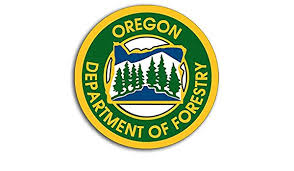Salem, OR — Starting today, draft versions of the statewide wildfire hazard and wildland-urban interface maps are available for public review and comment on Oregon State University’s Wildfire Risk Explorer website. These maps aim to educate residents about wildfire hazards, prioritize fire adaptation resources, and identify where new defensible space standards and home hardening codes will apply.
The wildfire hazard map has several key purposes:
- Educate residents and property owners about the hazard level in their areas.
- Assist in prioritizing fire adaptation and mitigation resources for vulnerable locations.
- Identify areas where defensible space standards and home hardening codes will apply.
A series of open houses about the state’s new community wildfire risk reduction programs were held from June 3 to July 1 throughout Oregon. These events provided opportunities to learn about wildfire hazard assessments, defensible space and home hardening programs, insurance concerns, and statewide wildfire policy.
“Defensible space around your home and property is just one of the ways Oregonians can be better prepared for wildfire,” said Oregon State Fire Marshal Mariana Ruiz-Temple. “No matter where you live, the simple actions you take to limit where an ember can land and catch fire can make all the difference, saving your home and protecting your community.”
Andrew Stolfi, director of the Department of Consumer and Business Services, emphasized the importance of home hardening standards. “These standards help reduce the risk of ignition to the most vulnerable parts of a home by the embers of a wildfire. Once the map is finalized, we will initiate rulemaking to adopt the home hardening standards, followed by a six-month phase-in period for education and outreach. The standards will apply only to new construction, major additions, and such things as replacing a roof or siding in high wildfire hazard zones within the wildland-urban interface.”
Representatives from various state agencies, including OSU, ODF, the Oregon State Fire Marshal, the Department of Consumer and Business Services Building Codes Division, and the Division of Financial Regulation, participated in the open houses, addressing questions from over 500 community members.
“The level of engagement at these community meetings was impressive,” said Dave Hunnicutt, Chair of the Wildfire Programs Advisory Council. “Hundreds of Oregonians had their questions addressed about community wildfire risk reduction programs and how the map supports protecting Oregon’s communities at the highest hazard of experiencing wildfire.”
Early maps depicting wildfire hazard were available at the meetings, but property tax lot level maps were not yet available. Now, draft maps allow Oregonians to see the hazard designation of their specific address and whether they are in the wildland-urban interface.
“The maps are still drafts,” said Andy McEvoy, wildfire research scientist at Oregon State University. “They won’t become final until we receive input from counties on potential local anomalies, administrative rules are adopted by the Board of Forestry, and we evaluate public input.”
Revisions to the draft maps over the past two years include adjustments for hay and pasturelands, northwest Oregon forest fuels, and irrigation of agricultural crops as a mitigating factor in wildfire hazard assessments. Final maps will reflect rules adopted by the Board of Forestry.
“Work on the wildfire hazard map hasn’t ceased over the last two years,” said Kyle Williams, Deputy Director of Fire Operations at ODF. “ODF and our partners at OSU have worked diligently to address concerns about the map’s accuracy. With one more round of public input, we will be well situated to finalize a hazard map that will contribute to advancing wildfire protection in Oregon as the Legislature intended.”
Comments can be sent to hazardmap@odf.oregon.gov. For more information, visit ODF’s wildfire hazard web page.


